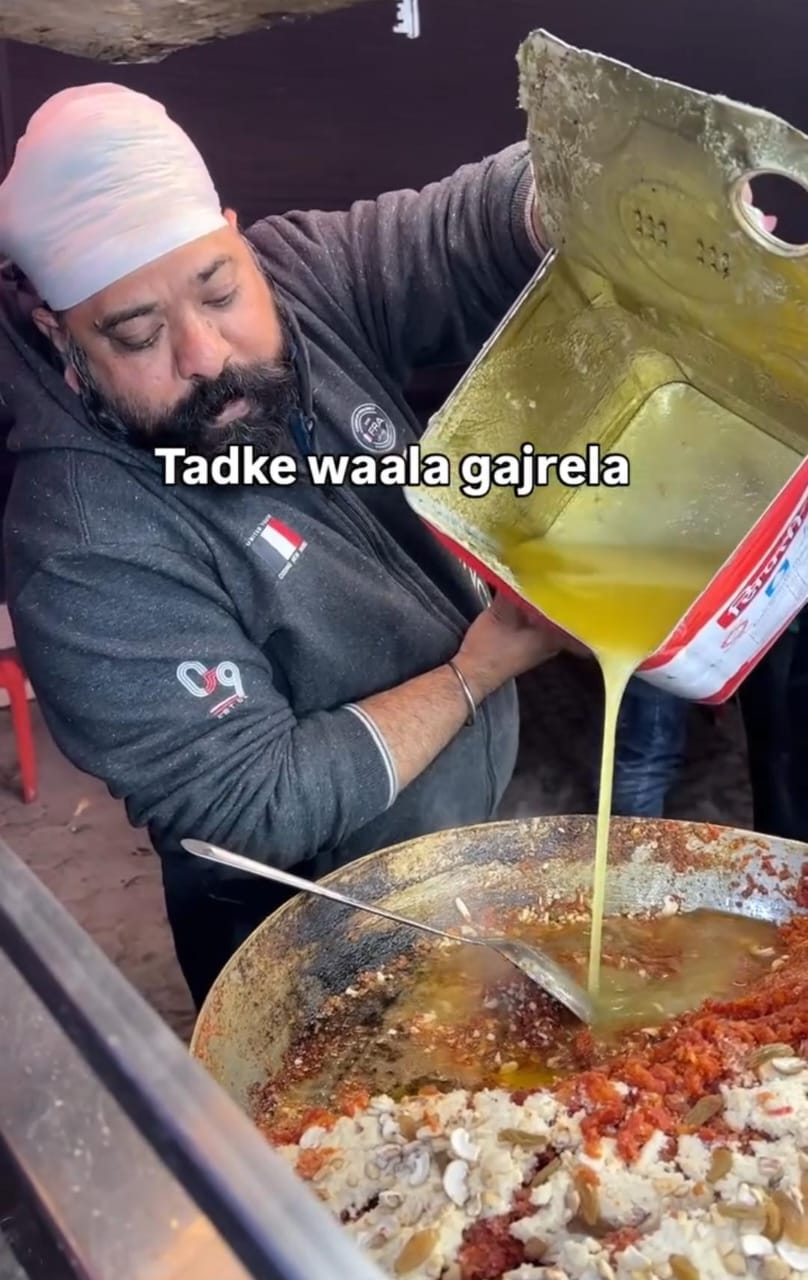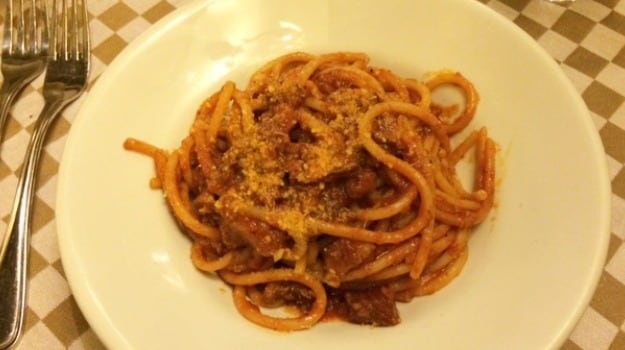Town of Amatrice, where pasta dish originates, accuses Carlo Cracco of lapse in judgment for adding sautéed garlic to recipe
Carlo Cracco has cooked alongside Alain Ducasse and earned two Michelin stars for his restaurant in Milan, where the city's elite feast on dishes such as lemon risotto with anchovies and cocoa, and marinated salmon with foie gras.
But the chef's professional pedigree did not stop the local council in Amatrice, a town two hours from Rome, from publicly denouncing and ridiculing him.
Cracco's sin? The chef confessed on national television that he used unpeeled, sautéed garlic as the "secret ingredient" in his amatriciana, one of Rome's staple pasta dishes.
The official Facebook account of the town of Amatrice, where the dish originates, accused Cracco of a lapse in judgment. "We are confident that this was a slip of the tongue by the celebrity chef, given his professional history," the council said in a statement.
According to officials in Amatrice, there are six ingredients that make up a real amatriciana: guanciale (pork jowl), pecorino cheese, white wine, tomatoes from San Marzano, pepper and chilli.
The town's deputy mayor, Piergiuseppe Monteforte, denied that officials were being too strict. "Use one ingredient for another, it changes not only the flavour of a dish but also the history of it," Monteforte told the Guardian. "If you use ingredients like garlic or onion in an amatriciana, it means you are ignoring a pastoral tradition that is almost 1,000 years old, passed down from generation to generation."
Amatriciana originated in the green pastures on the hills overlooking Amatrice, when shepherds used to bring cheese and pieces of pork jowl with them during long stays away from home and cook them in an iron pan. They made fresh pasta using flour and water that was then wrapped around a piece of wire, forming a tubular shape that is still used today.
This original dish is now known as white amatriciana. It was only at the end of the 1700s that tomato and chilli, two ingredients native to America and brought to Italy, were added to the dish to create the modern version.
Grazia Lo Bianco, the owner of Matricianella, a small restaurant in central Rome that specialises in the dish, stood with the council's uncompromising stance. "The flavour of the pork cheek should be dominant," she explained.
Some people added onion to their sauce, but that verged on the offensive, she said with a bemused look on her face. "If there are rules, they need to be respected, it's like any job."
For Lo Bianco, the rules do not apply only to the sauce, but also to the correct pasta that one ought to use. Always, she said, it should be bucatini, the long tubular pasta that, when cooked properly and slightly al dente, can be unwieldy for a beginner accustomed to spaghetti or short pasta.
She admitted that customers' demands sometimes had to take precedence over how she believes the dish ought to be served. Namely, the preference some have for rigatoni over bucatini, because it is less messy.
"We have a compromise that when men come with their white shirts and say they have a meeting. We can't say no. But we don't love rigatoni with amatriciana," she said.
On this point, even Lo Bianco and Monteforte, the deputy mayor of Amatrice, disagree.
The Amatrice official says that while bucatini used to be seen as the ideal pasta because it was used by the shepherds, these days, others can be used. Even the traditional amatriciana festival in town uses spaghetti.
"We say that ultimately, to make a real amatriciana, you have to be able to make the sauce according to tradition. Then add bucatini or spaghetti of your choice."
Recipe for amatriciana, from the office of the mayor of Amatrice
Ingredients (for four people) 500g spaghetti, 125g guanciale (pork jowl) from Amatrice, a spoon of extra virgin olive oil, a drop of dry white wine, six or seven San Marzano tomatoes or 400g of canned peeled tomatoes, some chili, 100g of grated pecorino from Amatrice, salt.
Directions Place the oil, chili and guanciale, which you have to cut into small pieces, into an iron pan. It is a sacred tradition to use the soft part of the pork jowl, or else it is not an amatriciana. Only that way will it have a delicacy and sweetness that it unmatched. Sauté these ingredients in a pan. Add the wine.
Blanch the whole tomatoes so that you can easily remove the skin, and then quarter them, remove the seeds, and add to the pan. Alternatively, use the canned tomatoes. Season with salt and allow the sauce to cook over the heat for a few minutes.
In the meantime, boil salted water and cook the pasta until it is al dente, or still slightly firm. Drain and place in a bowl. Add the grated pecorino. Wait for a few seconds and then add the sauce to the bowl. If you wish, you can add more pecorino after it is served.
A plate of amatriciana as served at Matricianella in Rome Photograph: PR












